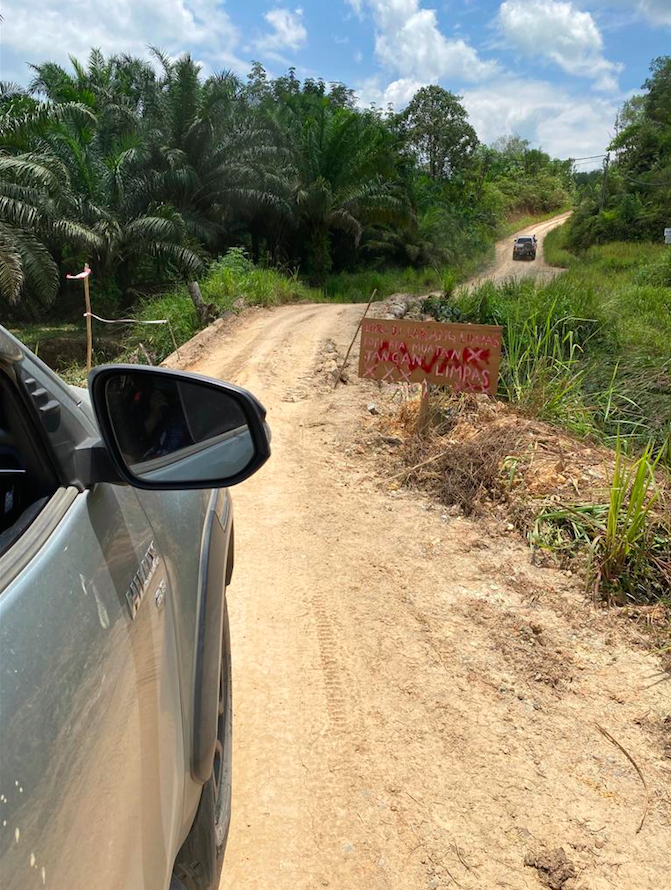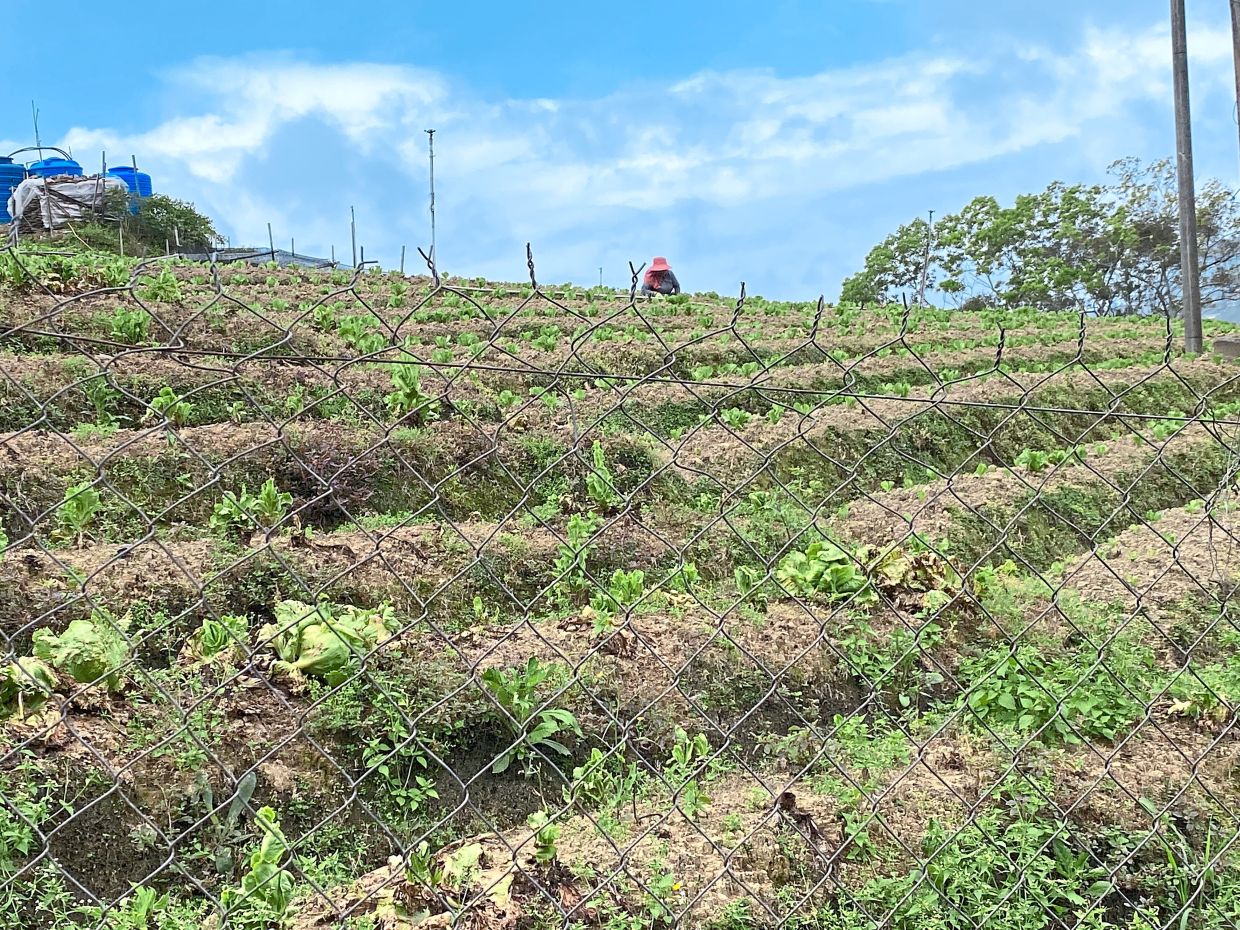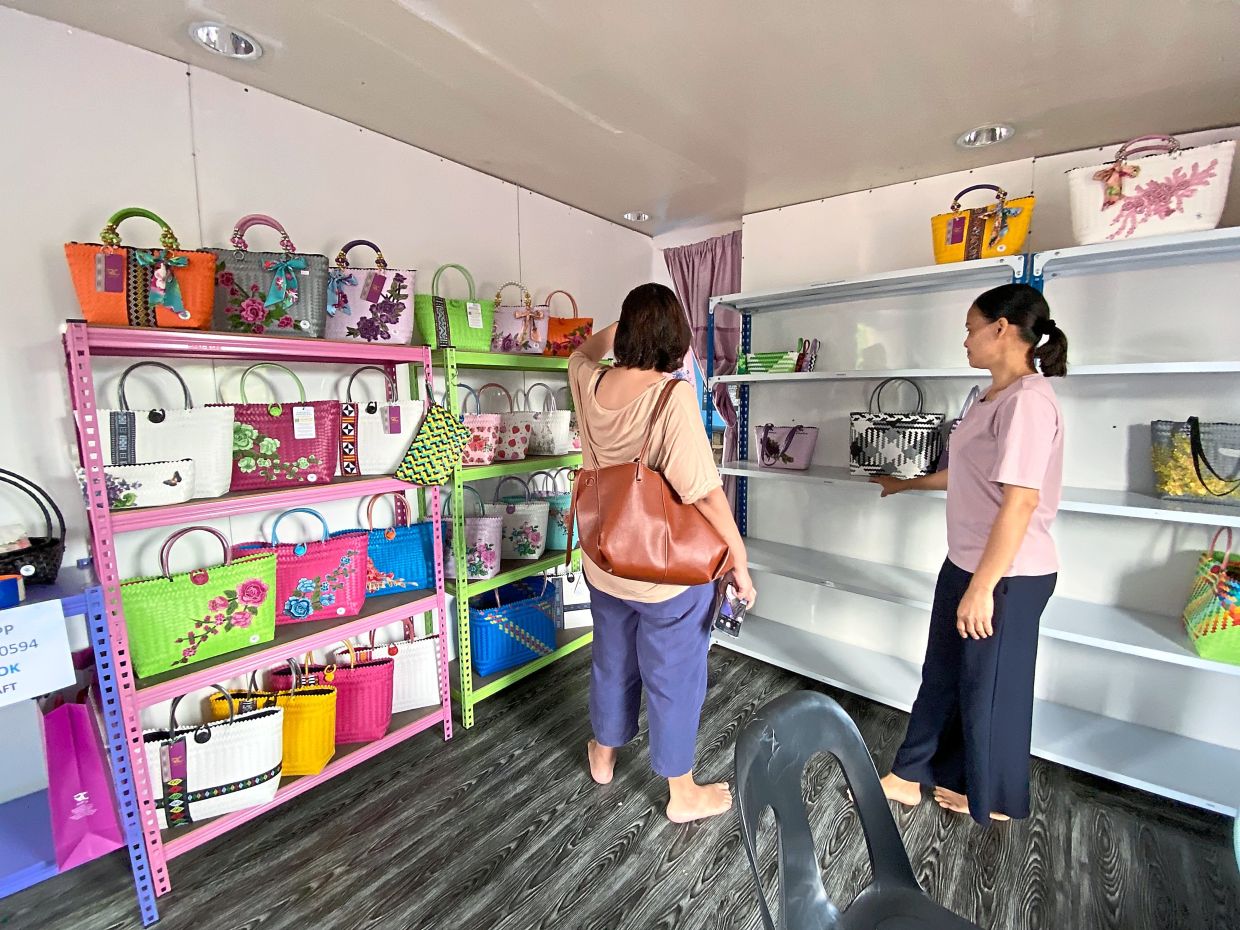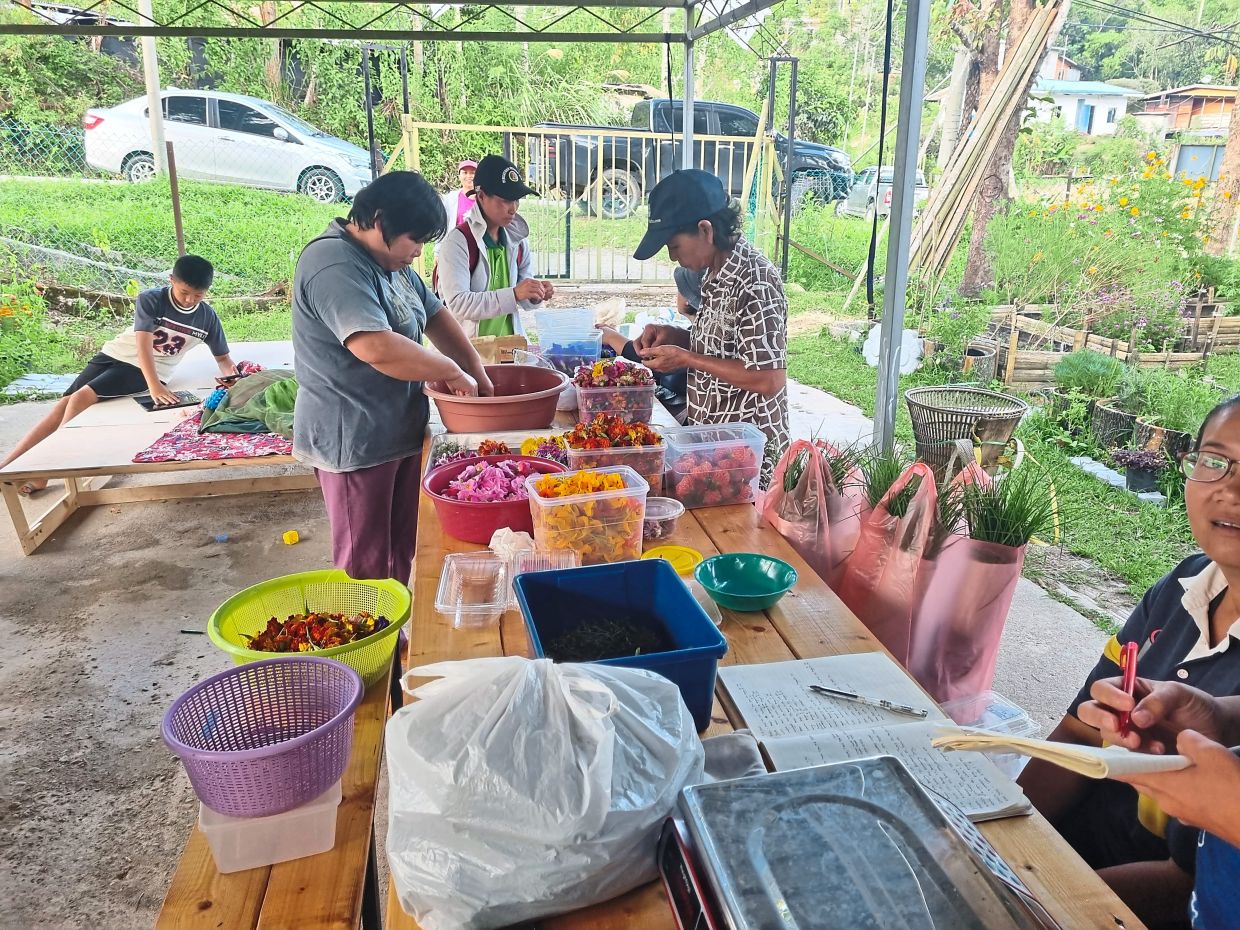(from left) Anthropologist Dr Vilashini Somiah and research assistant Lauren Brodie Tsen ventured into the Sabah interior to study rural indigenous communities.
During the pandemic, 36-year-old Julai, a Dusun woman entrepreneur and homestay owner from Kundasang, Sabah, worked with several other Muslim female entrepreneurs to generate an income by selling their crafts via TikTok and Facebook Live.
“Initially, we could earn a decent income, but this was short-lived because we don’t have enough capital to meet the demands of an increased capacity,” she admits.
“We saw many other women – also mothers – in Ranau, Bundu Tuhan and Kota Marudu, also using this method to generate an income collectively,” she adds.
Where they reside, there aren’t many opportunities for new business or tourists.
“And, there’s the risk of stocks expiring, goods going bad, and homestays shutting down and going out of business,” she says.
Lucy, an indigenous Lundayeh woman from a village near the Nabawan-Tongod border, explains that over the last couple of years, many of the men in their community have left to find jobs in the city, leaving mostly women and children in the village.
As the wife of a church elder and mother of three children, Lucy continues to build her community and motivate the inhabitants of the village to keep their spirits up.
The 49-year-old tries to raise funds for the women and youth to join in out-of-district activities to broaden their outlook on life.
These activities aren’t cheap and usually cost up to RM80 per person.
“It may seem like a small sum to people in the city, but to us, it’s a huge amount that we can’t afford,” she says.
These two women are part of the 30 indigenous women entrepreneurs from rural communities in Sabah that took part in a study titled “Narratives of Resilience of Female Entrepreneurs in Sabah During Covid-19 and Endemicity”.
Conducted by two women scholars who ventured into some of the most remote areas of Sabah to collect narratives of the lived realities of rural indigenous communities, the study reveals lessons on resilience from these people. It also suggests how the state and nation can help them more effectively.
Anthropologist Dr Vilashini Somiah, a senior lecturer of the Gender Studies Programme in University Malaya, and her research assistant Lauren Brodie Tsen, visited the towns of Ranau, Kundasang, Kota Marudu, Kudat, and Nabawan, and the village of Bundu Tuhan, from July to September 2023. They travelled long distances through difficult terrain, often in a small self-driven car, to reach the rural indigenous communities, where they conducted interviews with and gathered data on the locals.
The purpose of the research, which is funded through a national grant, is to understand the how the different groups of rural indigenous communities in Sabah have survived through the pandemic.
While these indigenous women entrepreneurs from rural areas have been supportive of one another, they often lament the challenges they encounter in trying to make money to support their families, says Vilashini, 40.
She points out that what people often think of rural indigenous people in Sabah is “two-dimensional and doesn’t give the whole picture”.
“Indigenous people are often seen as poor and backward, and while these communities do suffer from the negative impacts of marginalisation and socio-political oppression, they are so much more than what we perceive,” says Vilashini, adding that her motivation to study the rural indigenous people of Sabah stems from her shared heritage with them since her mother is of indigenous Sino-Kadazan descent, and from a rural place.
Anthropologist-in-training Brodie Tsen, 25, adds that being from an ethnic minority in Sarawak – her mother is migrant Filipino, while her father is Malaysian Chinese – piqued her interest in the topic of poverty and how it affects communities in Malaysia.
“My mother is from a very poor family in Metro Manila, and in the Philippines, even the poor have the relevant infrastructure around them. But what about those who live in remote areas, who don’t have the facilities that they need? This spurred my interest in researching rural communities,” she reveals.
Rural indigenous women entrepreneurs have gone through many struggles during the pandemic, says Vilashini, especially those on the intersection of other multiple oppressions such as being single mothers, disabled, or not having access to socio-economic opportunities.
However, she adds, what is “incredibly impressive” about these indigenous women entrepreneurs is “they never made the pandemic an excuse to not survive and thrive”.
“They’ve always had a very strong sense of resilience and were prepared for the worst. No matter what came their way, they found ways to put food on the table and ensure their children were protected and provided for,” she says.
Vilashini feels it is important for Malaysians to pay attention to these stories of survival as it gives us a sense of hope in mitigating and surviving future crises.
“People often measure resilience using more exposed communities/businesses as a benchmark. But it’s important to also see it from the perspective of rural indigenous communities, especially these women entrepreneurs who haven’t had the same economic opportunities as those in other parts of Malaysia, and yet, continue to survive and thrive,” she explains.
What the majority of the rural indigenous women entrepreneurs want is recognition for the way they’ve survived and overcome these difficulties during the pandemic.
“They want people to realise that the systems, opportunities or practices given to other marginalised women in urban areas can’t be applied to women in rural settings as their needs, wants and requirements are very different.”
“Many of them only became entrepreneurs during the pandemic to help their husbands who had lost jobs when companies shut down. They’ve had to enter a work space they’ve not been exposed to before,” she adds.
“Grasping the language of entrepreneurship involves a very steep learning curve for them because many of these communities don’t even speak English or Bahasa Malaysia in their daily life. They speak their own indigenous language.”
These women want the Sabah state government to come up with programmes that cater specifically for rural indigenous women who have now entered the entrepreneurial sector, says Vilashini.
“This includes creating a platform where they can network and exchange ideas, learn from each other and build camaraderie. Besides financial aid, they hope that the State can provide them training that’s often only available to urban women,” she says.
This issue is compounded because of the many types of rural indigenous communities, each with their own issues, she explains.
“And while certain policies do help indigenous entrepreneurs, it’s often given to elites in urban areas first, and the ones in remote areas rarely receive it.”
Funding is another issue – whether it’s to carry out the training, or transporting these women to urban areas to be trained, or transporting trainers to these areas to train the women, she says.
Another obstacle that hinders them from bouncing back after the pandemic is the digital divide that is apparent in the remote areas they live in.
“Some of the women started innovative businesses on TikTok and Facebook Live during the pandemic to sell local indigenous crafts, such as plants and flowers made into art.
“They were able to market to city folks in Peninsula Malaysia and even to Indonesia. But, once the markets opened up, sales became more difficult,” she explains.
“The women entrepreneurs from these rural communities don’t have the same level of business exposure as those from urban areas. They needed to evolve their businesses to the next stage, but most didn’t know how to.
“They are stuck because they can’t go back to planting crops which now has massive limitations. And, if they continue to sell novelty items online, there’s no market for it because the audience is no longer there after the MCO ... people aren’t stuck at home watching TikTok or Facebook Live,” adds Vilashini.
One main takeaway from the study is that while Covid-19 has disrupted their livelihood, the women fought back.
The general consensus from the women, says Vilashini, was that they don’t see themselves being represented in the grand scale of things. And this includes pandemic recovery efforts.
“Often when there is an announcement of assistance provided, it doesn’t reach them and it doesn’t translate into policy because they are located in a very remote area. This was true even prior to the pandemic,” concludes Vilashini.

















